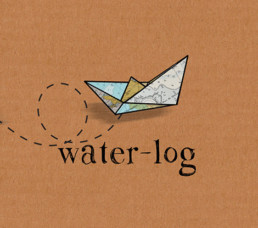
You’re going sailing? Fantastic! Where to? I hear Hawaii might be nice, or how about the Azores? Will you simply follow the equator or do you plan to round Cape Horn?
A “sailing round the world” plan sounds incredibly grand and rather simplified in it’s design. But, let’s be clear, you are not going to get to go everywhere and see everything. In fact, making any stops or visits in order to actually experience and enjoy any of the places on your route will result in the whole business taking longer than you might have first thought.
We’re well into our ninth year of full-time, liveaboard, worldwide cruising. Nine years into a two year trip, is probably a more accurate way of labelling it. And yet, we’re still always struck by the huge swathes of the globe that we’ve not yet gotten anywhere near.
At the start of a circumnavigation the countries and seas ahead of you appear to be a limitless horizon, the world is your oyster, after all it’s the stuff of fantasy. Well, reality may have slightly different plans for you. Our first rule onboard that we established was that we were only ever going to be in each ocean at the right time of year to be there. This, we reasoned, would keep us well clear of extreme weather conditions and give us a rough framework schedule to plan our sailing to. Storm seasons dictate the sailing season and act as a kind of conveyor belt to keep you moving forwards, either westwards or in a great looping circle. Likewise the trade winds also have a marching rhythm to keep you moving westwards, although they don’t always have to be obeyed.
In truth, we’ve always sailed the road fairly well-travelled, as a steady westerly progress seemed like the most logical option for a couple who were green to life on the blue. So it was that our late seasonal departure from the UK saw us making tracks southwards, along the west coast of Europe, to Morocco and the Canaries, bypassing the glorious cruising grounds of the Mediterranean entirely in favour of hitting the right timing for an Atlantic crossing. Our arrival into the Caribbean was the start of a leisurely anti-clockwise circuit, abandoning St. Vincent, Grenada and Tobago in favour of Antigua, the BVI’s and Cuba, coming to a halt in Mexico. When the looming storm season forced us south to safely hurricane-free Panama, we had to miss Belize, Honduras and Nicaragua entirely.
Our first real detour occurred then, when we opted to expand our crew list as opposed to crossing the Pacific, and took a very major right turn after transiting the canal. That turn also closed the book on us sailing any of South America at that time. Our cruise northwards, up the coast of Central America was directly into both wind and current, certainly not the stuff of conveyor-belt easy sailing. But, with forecast-watching and picking our timings right, it was a lovely trip rather than a hard slog. Although we did burn a lot of diesel.
8 months later we got back on track, stepping out into the Pacific, heading west again along the well-known coconut milk run. By starting so far north the Galapagos and Easter island would have been too far a diversion so we opted for a first landfall in French Polynesia. As we kept westwards we didn’t visit the Samoas but travelled as far as Fiji before heeding the oncoming cyclones yet again and taking our seasonal shelter in New Zealand. And, years later, when we took our final South Pacific sail up north and west over the top into Indonesia, we would skip Australia and New Caledonia, in favour of their more eastern Melanesian neighbours.
For every country we’ve visited we’ve had to rule out stopping in others as each passage west makes a journey north or south impossible. And for each land we’ve had the privilege of dawdling in there are simply loads that we’ve had to sidestep altogether. But far from feeling hard done by the seasons and trade winds have helped to shape our journey, making sense of the ridiculously open-ended concept of “sailing the world”.
It’s part of the enduring magic of the sailing life that you’re always left wanting even more of it. That Moitessier-esque madness that made him change course and point onwards to the Cape of Good Hope. The Frenchman’s explanation of his motives was that it was simply “because I am happy at sea”, which is possibly the best route and direction for any yachtsman to aim for.
